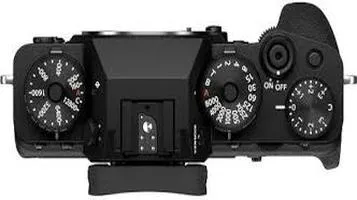A Comprehensive Review of the Fujifilm X-T4
The Fujifilm X-T4 is a versatile mirrorless camera that strikes a balance between advanced features and classic design, appealing to both professional photographers and enthusiastic amateurs. Building on the success of its predecessor, the X-T3, it introduces in-body image stabilization (IBIS), enhancing its capability to capture sharp images in a variety of lighting conditions. The camera boasts a 26.1MP APS-C X-Trans CMOS 4 sensor and the X-Processor 4, delivering excellent image quality and fast performance. It supports 4K video recording at up to 60fps, catering to videographers as well. The X-T4 features a high-resolution 3.69-million-dot electronic viewfinder and a 3-inch vari-angle touchscreen, offering flexibility in composition. Its robust build, weather resistance, and extensive battery life make it ideal for diverse shooting environments.

The Fujifilm X-T4 is a standout in the mirrorless camera market, offering a rich blend of advanced features and robust performance that appeals to both amateur enthusiasts and seasoned professionals. With its retro-inspired design, impressive image quality, and versatile capabilities, the X-T4 has carved out a solid niche for itself. Here, we delve into the various aspects that make the Fujifilm X-T4 a compelling choice for photographers and videographers alike.
Design and Build Quality
At first glance, the Fujifilm X-T4's design is both nostalgic and practical. The camera's aesthetic is reminiscent of classic film cameras, with its dials and control layout exuding a vintage charm. However, this retro look is underpinned by modern ergonomics and build quality. The X-T4 boasts a magnesium alloy body that is both durable and weather-sealed, offering protection against dust and moisture. This makes it a reliable companion for outdoor shoots in diverse conditions.
The camera's grip is well-contoured, providing a comfortable hold even during extended use. The tactile control dials for ISO, shutter speed, and exposure compensation are a joy to use, offering a sense of direct control that many photographers appreciate. Additionally, the X-T4 features a fully articulating touchscreen, which is a significant upgrade from its predecessor, the X-T3. This articulating screen is particularly useful for vloggers and those who shoot from unconventional angles.
Image Quality and Performance
One of the standout features of the Fujifilm X-T4 is its 26.1-megapixel APS-C X-Trans CMOS 4 sensor, paired with the X-Processor 4. This combination delivers stunning image quality with rich colors, sharp details, and excellent dynamic range. Fujifilm's renowned film simulation modes are also available, providing photographers with the ability to replicate the look of classic film stocks directly in-camera. These modes, such as Velvia, Provia, and Acros, are not just gimmicks; they add a creative dimension to the shooting experience.
Low-light performance is commendable, with the X-T4 maintaining noise levels at a minimum even at higher ISO settings. The camera's in-body image stabilization (IBIS) system is a game-changer, offering up to 6.5 stops of stabilization. This makes handheld shooting in low light much more feasible and enhances the overall sharpness of images.
Autofocus performance is another area where the X-T4 excels. The camera features a fast and accurate phase-detection autofocus system with 425 points, covering almost the entire frame. Eye and face detection work seamlessly, making it easier to capture sharp portraits and action shots.
Video Capabilities
The Fujifilm X-T4 is not just a stills camera; it is also a formidable video tool. It supports 4K video recording at up to 60 frames per second and Full HD recording at up to 240 frames per second for slow-motion footage. The inclusion of IBIS greatly benefits video shooters, providing smooth, stable footage without the need for external gimbals in many situations.
Fujifilm has also included F-Log recording for those who prefer to capture flat footage for more flexibility in post-production. The camera's ability to record 10-bit 4:2:0 internally or 10-bit 4:2:2 via HDMI opens up professional-level video quality. The addition of a headphone jack and a USB-C port that supports headphone adapters ensures that audio monitoring is not compromised, which is crucial for serious videographers.
Battery Life and Storage
One of the criticisms of the X-T3 was its relatively short battery life. Fujifilm has addressed this with the X-T4 by introducing a new, larger NP-W235 battery, which offers a significant improvement. The X-T4 can shoot approximately 500 frames per charge in normal mode, which is a substantial increase over its predecessor.
The camera also supports dual UHS-II SD card slots, providing ample storage options and flexibility for both stills and video recording. This is particularly useful for professionals who require redundancy and extended storage capacity during shoots.
User Experience and Connectivity
The user interface of the Fujifilm X-T4 is intuitive and user-friendly. The menu system is well-organized, and the inclusion of a Q menu allows quick access to frequently used settings. The EVF (Electronic Viewfinder) is bright and detailed, offering a clear view even in challenging lighting conditions.
Connectivity options include built-in Wi-Fi and Bluetooth, enabling easy transfer of images to smartphones or tablets. The Fujifilm Camera Remote app allows remote control of the camera, adding another layer of convenience for photographers who need to operate the camera from a distance.
Conclusion
In summary, the Fujifilm X-T4 is a versatile and powerful mirrorless camera that excels in both photography and videography. Its blend of classic design, robust build quality, superb image stabilization, and advanced features make it a top contender in its class. Whether you are an enthusiast looking to elevate your photography or a professional in need of a reliable and capable tool, the X-T4 is a worthy investment. Its balance of performance, usability, and aesthetic appeal ensures that it will remain a favorite among photographers for years to come.






